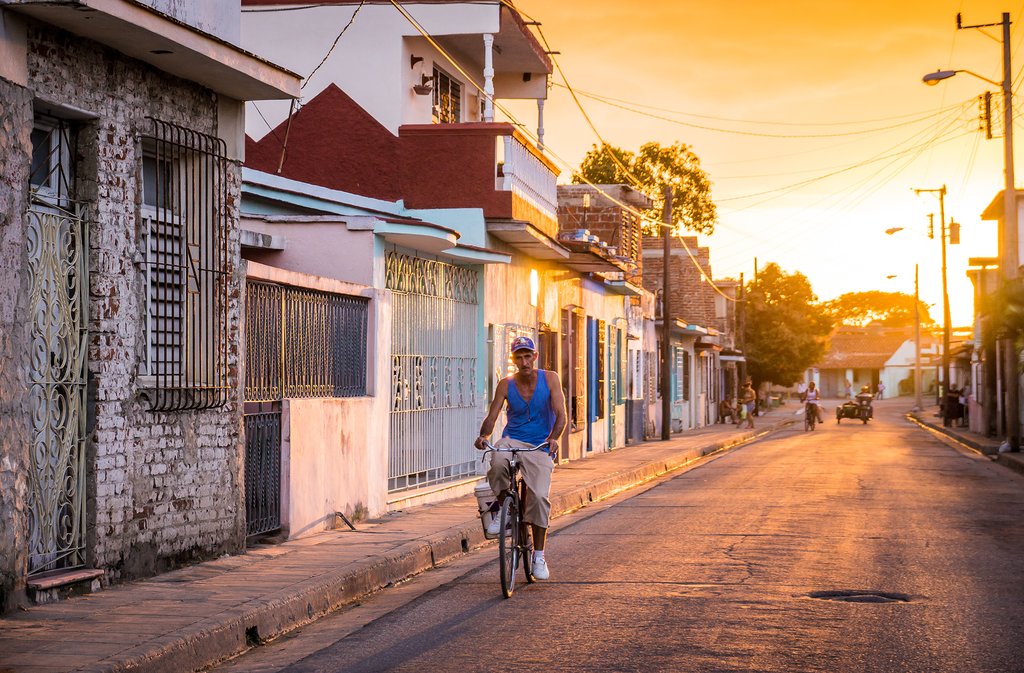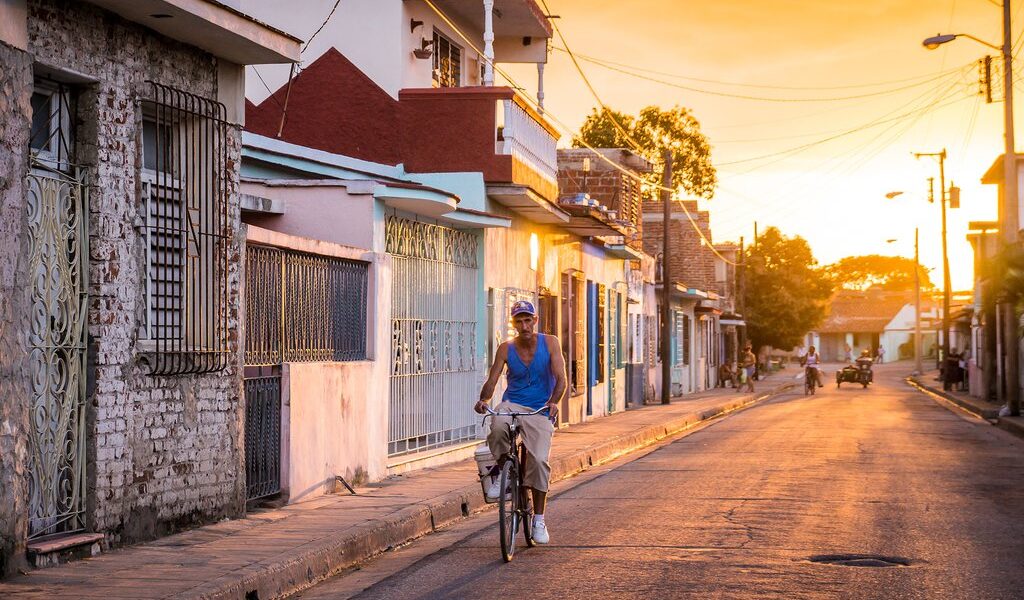
From fascinating colonial cities to rich culture and beautiful nature, Cuba has something to excite everyone. How you experience this country depends on your preferences—you can tour it solo or with a guide or group. You can stick to one region or visit many. You can focus on Cuba’s natural wonders or enjoy sultry times in the cities. Here are options to suit every taste.
## Embarking on Your Cuban Adventure: A Comprehensive Guide
Planning a trip to the captivating island nation of Cuba requires careful consideration of your personal preferences and travel style. What kind of Cuban experience are you dreaming of? Are you yearning to venture off the well-trodden tourist paths and delve into the authentic heart of the country? What is your budget for this exciting endeavor? How adventurous are you feeling, and what level of educational enrichment are you seeking from your Cuban sojourn?
For travelers hailing from the United States, it’s crucial to remember the legal requirements governing travel to Cuba. U.S. law mandates that your trip must involve “support for the Cuban people.” This entails engaging in meaningful interactions and financial transactions that directly benefit self-employed Cubans and contribute to the growth of “an independent society.” Whether you’re embarking on a thrilling active adventure or a more contemplative journey, ensuring compliance with these regulations is paramount. Your answers to the initial questions about your travel preferences will play a vital role in shaping the perfect itinerary that aligns with both your desires and the legal requirements.
## Exploring Cuba: A Regional and Interest-Based Approach
Cuba is a land of diverse landscapes, vibrant culture, and captivating history, offering something for every type of traveler. While independent exploration is certainly possible, the island nation’s complex history, intricate political landscape, evolving economic situation, and rich social fabric make navigating it independently a challenging endeavor. Enlisting the expertise of a knowledgeable local guide can unlock hidden depths, unravel historical mysteries, and significantly enhance your understanding and overall satisfaction.
For those with a passion for art, architecture, and museums, Cuba is an absolute treasure trove. While virtually every city across the country boasts its own unique collection of artistic and historical gems, **Havana** stands out as a particularly rich destination. Allocate several days to fully immerse yourself in the capital city’s captivating offerings. Wander through its historic streets, admire its stunning colonial architecture, and lose yourself in its vibrant art scene. Havana is a city that demands exploration and rewards those who take the time to discover its secrets.
If music and dance are the rhythms that move your soul, then **Havana** and **Santiago de Cuba** should be at the top of your list. Havana offers an unparalleled range of musical experiences, from the electrifying energy of salsa clubs to the intimate ambiance of jazz cafés. Santiago de Cuba, on the other hand, is the undisputed birthplace of traditional *trova* and *son* music. Here, you’ll also discover musical forms that reflect the city’s vibrant Haitian heritage. Don’t overlook **Trinidad**, another rich musical center. However, no matter where you find yourself in Cuba, you’re sure to encounter traditional music and dance forms that will captivate your senses.
For those fascinated by revolutionary history and the iconic figure of Che Guevara, a visit to **Santa Clara** and Santiago de Cuba is essential. These cities played pivotal roles in the Cuban Revolution and offer a wealth of historical sites and museums that bring the events of that era to life. If you have an adventurous spirit and ample time, consider embarking on a challenging but rewarding hike to Fidel Castro’s guerrilla headquarters at **La Comandancia de la Plata**, nestled in the heart of the **Sierra Maestra Mountains** of eastern Cuba. This remote and historically significant location offers a unique glimpse into the revolutionary past. Another fascinating destination for history buffs is the former Castro family estate at **Birán**, located near **Holguín**.
Nature enthusiasts will find themselves spoiled for choice in Cuba’s diverse landscapes. From leisurely horseback rides through the picturesque countryside to invigorating hikes in the **Sierra Escambray**, **Pinares de Mayarí** or the Sierra Maestra mountain ranges, there’s an outdoor adventure to suit every taste. For birding and wildlife enthusiasts, consider exploring **Parque Nacional de Guanahacabibes** (in **Pinar del Río** province), **Parque Nacional Zapata** (Matanzas province), or any of the mountain zones and coastal reserves of **Ciego de Ávila** and **Camagüey** provinces. Hiring a knowledgeable local guide is highly recommended, as their expertise can significantly increase your chances of spotting wildlife and learning about the local ecology. These hawk-eyed naturalist guides possess invaluable insights into the flora and fauna of the region, enriching your experience and fostering a deeper appreciation for Cuba’s natural wonders.
All of these incredible destinations can be easily accessed by car, offering you the freedom to explore at your own pace. Alternatively, you can join a guided tour, which provides a convenient and informative way to discover the highlights of each region. English is the standard language for the majority of tours, making it easy for international visitors to participate and learn from experienced guides.
## Strategic Timing: When and Where to Explore Cuba
Cuba’s “Holy Trinity”—Havana, **Viñales**, and Trinidad—are immensely popular destinations that often attract large crowds, especially during the winter months. If you prefer a more secluded and authentic experience, consider venturing further afield, where you’ll find a wealth of attractive and relatively undiscovered venues. Keep in mind that temperatures tend to increase as you travel eastward across the island. During the summer months, which constitute the off-season, the weather can be extremely hot and humid, and it’s also the rainy season. Planning your trip around the weather and peak seasons will ensure a more enjoyable experience.
Baseball enthusiasts should plan their visit between August and April to coincide with Cuba’s baseball season. Consider joining a specialized group tour that caters specifically to *beísbol* aficionados, allowing you to immerse yourself in the local baseball culture and witness the passion of Cuban fans firsthand. For travelers prioritizing arts and musical culture, it’s wise to consider the timing of key events, most of which take place in Havana between November and January. These events offer a unique opportunity to experience the vibrant cultural scene of the capital city. If you’re eager to participate in carnival festivities, the best option is Santiago de Cuba in July, where you can witness the city come alive with music, dance, and elaborate costumes.
## The Allure of Independent Exploration in Cuba
If your budget allows, renting a car is a popular way to navigate Cuba at your own pace and explore its diverse landscapes. However, it’s important to note that car rentals in Cuba can be quite expensive, and demand often exceeds supply, particularly in Havana. Advance reservations are therefore essential to secure a vehicle for your trip. The state-run rental agencies have branches in every town, and during the high season, you may find it easier to locate an available vehicle outside of Havana.
Keep in mind that road conditions in many parts of the country can be challenging, with hazards such as deep potholes, ox-carts, and bicyclists sharing the road. However, Cuban drivers are generally cautious and not prone to speeding. The traffic police are also highly efficient, so it’s wise to obey all traffic regulations, especially regarding speeding. While traffic signage has improved significantly in recent years, many roads and junctions still lack signs, making it essential to research your route beforehand and plan your stops in advance.
Bicycling is another fantastic way to explore Cuba, allowing you to connect with the landscape and experience the country at a slower pace. If you choose this mode of transportation, be sure to bring your own sturdy mountain bike, along with all the necessary spare parts and supplies, as they may be difficult to find locally.
Traveling between cities by public transport can be a complex undertaking. Víazul offers a fleet of air-conditioned buses for tourists, but reservations are required. Visitors are generally restricted from using public intra-city buses, and the rudimentary rail system primarily serves the provincial capitals on an infrequent basis. The alternative options are *camiones* (old trucks) or hitch-hiking, which can be unpredictable and less comfortable.
Despite these challenges, finding accommodation is generally not a problem. Almost everywhere you go, you’ll find *casas particulares* (private B&Bs). Even during the high season, a room can usually be found, and the owners of B&Bs are often willing to call around on your behalf if needed. These *casas particulares* offer an authentic and affordable way to experience Cuban hospitality and immerse yourself in the local culture.
## Unveiling Cuba with Local Guides and Chauffeurs
The Cuban government has recently loosened its control over tour services, making it easier to find private local guides who can enhance your travel experience. Many of the best guides are English-speaking graduates of the state’s tourism schools and have gained valuable experience working for the efficient state tour companies. Others are untrained freelancers whose quality and trustworthiness may vary. Fluency in English is a positive indicator of a guide’s competence and professionalism.
If you have a particular interest, such as architecture, photography, or music, it’s highly beneficial to hire a local guide with relevant expertise. They can take you to hidden gems and off-the-beaten-path locations that are known only to locals, such as unique nightspots and cultural venues. Almost every town also has licensed horse-drawn carriages whose drivers can share their intimate knowledge of local sights and stories.
Most national parks and reserves require visitors to be accompanied by an accredited guide, ensuring the protection of the environment and the safety of visitors. Elsewhere, if hiking off-the-beaten-path, it’s advisable to seek a local guide who comes recommended or who appears knowledgeable about the area. Their expertise can help you navigate the terrain safely and discover hidden wonders that you might otherwise miss.
Taxi drivers can be hired for long rides, but the yellow state-owned vehicles tend to be expensive. A more affordable option is to hire a classic American car with a *chofer* (driver). These drivers are often very knowledgeable about the local area and can provide valuable insights into Cuban culture and history.
## Embarking on a Guided Tour of Cuba
If you seek a comprehensive understanding of Cuba, whether broad or focused on a specific interest, joining an organized guided tour is an excellent option. Cuba’s state-run tour agencies offer a variety of day-long and multi-day excursions, led by trained English-speaking guides who can share their knowledge and insights. Popular excursions from Havana include visits to tobacco country, Matanzas, Cienfuegos, and Trinidad, showcasing the diverse landscapes and cultural heritage of the island.
Numerous U.S. companies also offer programs of every kind, emphasizing “support for the Cuban people.” These include bicycling, kayaking, and even motorcycling trips, as well as in-depth cultural excursions catering to specific interests. All of these programs incorporate relevant cultural interactions with Cubans and may even include a non-Cuban expert on the island nation to broaden your understanding.
Specialized tours are also available, catering to niche interests such as culinary studies, LGBT culture, and Jewish heritage. You can even cruise around the island on a luxury yacht or embark on photography tours with National Geographic photographers, exploring the more remote and less-visited parts of Cuba. For adventurous travelers, bone-fishing or scuba diving in the pristine Jardines de la Reina offers an unforgettable experience amidst one of the world’s most remarkable coral reef systems. In all cases, U.S. residents must ensure that their participation involves sufficient “support for the Cuban people” activities.
These tours provide a fantastic way to meet like-minded individuals and offer options for every budget, from budget-conscious travelers to those seeking a luxurious experience. By joining a guided tour, you can immerse yourself in the culture, learn from experts, and create lasting memories of your Cuban adventure.
B-659

